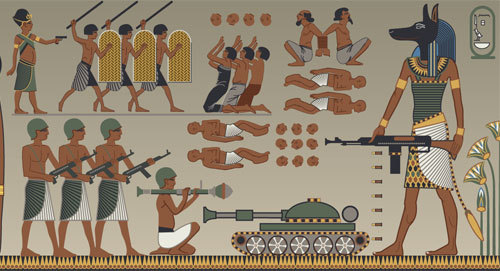Understanding Morden Art

The phrase "modern art," which frequently baffles both novices and seasoned art lovers, refers to a period of revolutionary changes in the visual culture industry. From surrealist installations to abstract paintings, modern art pushes the envelope and provides a completely fresh perspective on the world.
Modern art: what is it?
Art created between the late 19th and mid-20th centuries (approximately 1870–1960), when artists' methods underwent significant changes, is regarded as modern art. Innovation, abstraction, and the rejection of earlier creative traditions replaced traditional forms and techniques.
Modern art investigated emotional depth, subjectivity, and new mediums, in contrast to classical art, which was frequently preoccupied with idealized representation and technical expertise. Artists wanted to portray how the world looked and how they saw it.

The Main Features of Abstract Art:
Modern painters aimed to depart from depicting the world as it was. By dissecting objects into geometric shapes or experimenting with form and color, they employed abstraction.
Focus on Subjectivity and Emotion: Modern art frequently prioritizes individual expression over realism. The artist's inner life, mental health, or responses to social shifts may all be reflected in their works.
Technique Innovation: Modern artists experimented with novel mediums, instruments, and methods. This covered mixed media, collage, and sculpture. Using unconventional media became a defining characteristic of the time.
Rejection of Tradition: The classical, academic training that had dominated earlier ages was something that modern artists wanted to move away from. They frequently broke rules and conventions in an attempt to overthrow the status quo.
Prominent Modern Art Movements
The 1860s–1880s Impressionist movement
Impressionism, the first wave of modern art, broke with the strict formalism of earlier decades. Pierre-Auguste Renoir, Edgar Degas, and Claude Monet were among the artists who preferred capturing ephemeral moments of light, color, and atmosphere over precise, organized portrayals.
Impressionism is characterized by the "impression" rather than a meticulous portrayal of truth. The overall impression of a scene is created by the blending of colors and the visible brushstrokes.
Cubism (1907–1917)
Cubism, which was pioneered by Pablo Picasso and Georges Braque, transformed our understanding of form and space. Cubist painters produced multi-dimensional perspectives on a two-dimensional canvas by breaking things down into broken, angular shapes. This change had a significant impact on later art movements.
Cubism made viewers reevaluate the concept of representation in art by challenging the fundamental nature of reality and perception.
Surrealism in the 1920s and 1950s
The goal of surrealism, which was led by artists such as Salvador Dalí, René Magritte, and André Breton, was to close the gap between the conscious and unconscious minds. Surrealists, who were influenced by Freudian psychoanalysis, produced fanciful, dreamy imagery that examined irrationality, memory, and desire.
Surrealism frequently produced surprising juxtapositions that questioned our comprehension of logic and reality by rejecting the reasonable and embracing the bizarre.
Expressionist Abstractionism (1940s–1950s)
This post-World War II American movement placed a strong emphasis on expressing emotions on the spur of the moment. Direct and unvarnished art was the main goal of artists like Willem de Kooning, Mark Rothko, and Jackson Pollock.
Abstract expressionism uses large-scale, expressive brushwork or color fields to convey universal feelings. The intention was to arouse strong emotions in the audience rather than to depict a particular idea.
Modern Art's Legacy and Influence
Not only did modern art impact the art world, but it also had an impact on architecture, music, literature, and even politics. Modern painters deviated from conventional wisdom, opening the door for fresh approaches to self-expression and creativity. Their inventions involved experimenting with materials and methods as much as they did with social conventions.
Even now, contemporary art is still shaped by this change. From street art to digital installations, many of the methods and concepts that arose from modern art are essential to contemporary art movements.
The Significance of Contemporary Art
You may be asking why modern art is still valuable in today's society despite its abstract forms and enigmatic meanings. Its ability to convey feelings and concepts in a way that cuts across time and cultural boundaries holds the key to the solution. Viewers can challenge their perceptions and ask questions about the world around them thanks to the unique perspective that modern art gives.
Modern art simultaneously reflects and critiques society in a world that is becoming more interconnected and complex. It still challenges us to embrace ambiguity, think critically, and look for significance in the unexpected.
How Modern Art Can Be Appreciated
For those who are unfamiliar with modern art, it may initially appear daunting or perplexing. The following advice will help you interact with it:
Tell the Story First: A lot of contemporary artists drew inspiration from certain occasions or concepts. You can relate to the art more if you know the personal and historical background of it.
Prioritize Emotion Over Form: Emotion is frequently given precedence over accurate portrayal in modern art. Ask yourself how you feel about the work. Does it make you happy, sad, confused, or in awe?
Challenge Your Views: You are encouraged to view the world from different perspectives by modern art. Do not hesitate to challenge your presumptions and accept other interpretations of objects you are familiar with.
Investigate Various Media: Contemporary artists worked with a range of materials. You can learn more by investigating the variety of techniques used in everything from paint to found objects, photography to performance art.
In conclusion
The goal of modern art has always been to question the status quo and broaden our conception of what constitutes art. Artists of the late 19th and mid-20th centuries revolutionized our engagement with visual culture by embracing abstraction, experimentation, and passion. Even if it may seem confusing at first, modern arcane elicits emotions, thoughts, and discussions that cut across time.
The heritage of contemporary art continues to inspire and influence creative minds worldwide, whether you're looking at a gallery, reading about the life of an artist, or thinking back on your own experiences.
Reference of images:
